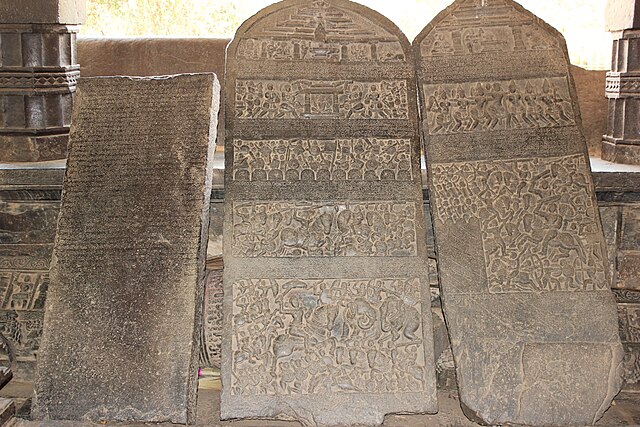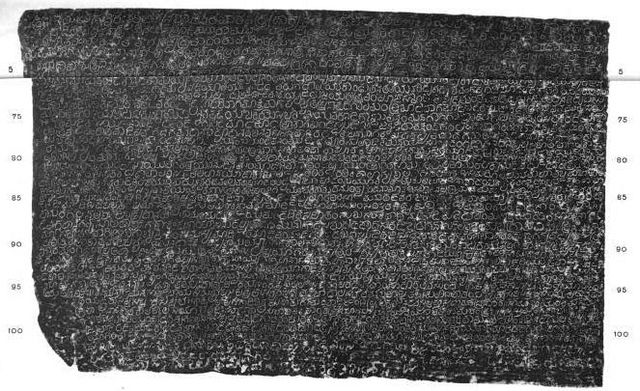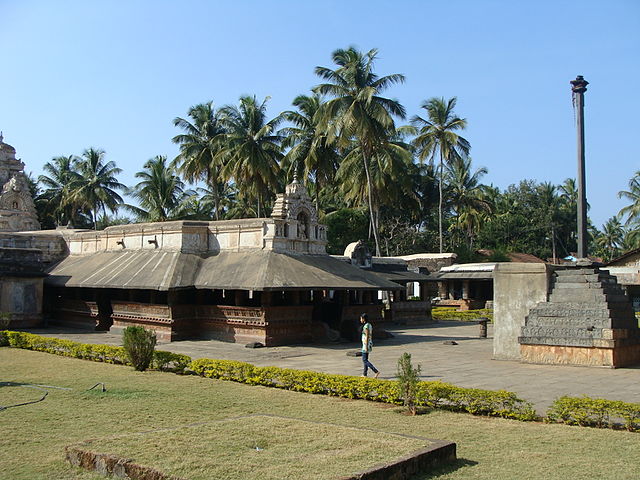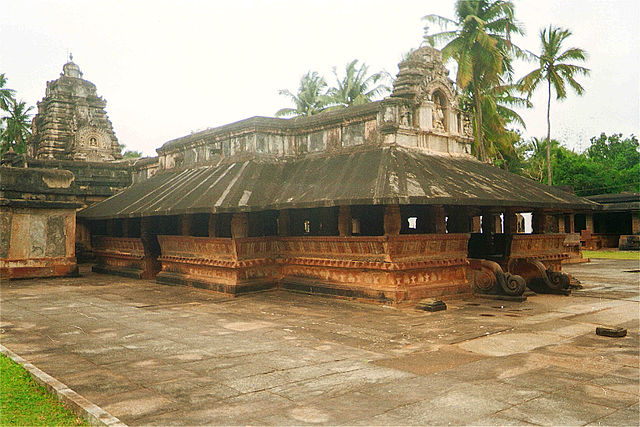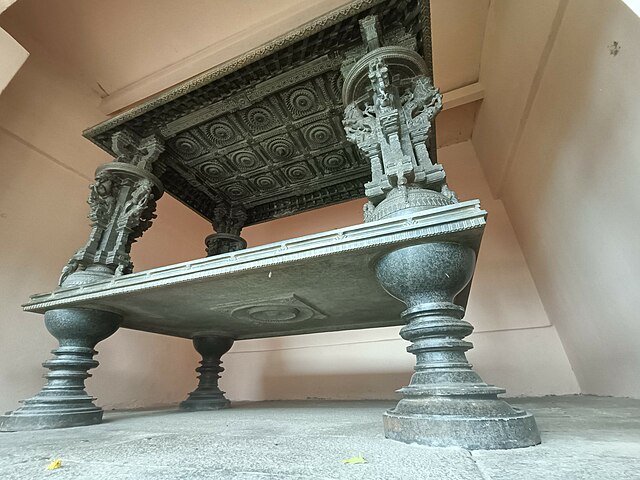The Kadambas were an ancient royal family that ruled northern Karnataka and the Konkan from Banavasi in present-day Uttara Kannada district in India. The kingdom was founded by Mayurasharma in c. 345, and at later times showed the potential of developing into imperial proportions. An indication of their imperial ambitions is provided by the titles and epithets assumed by its rulers, and the marital relations they kept with other kingdoms and empires, such as the Vakatakas and Guptas of northern India. Mayurasharma defeated the armies of the Pallavas of Kanchi possibly with the help of some native tribes and claimed sovereignty. The Kadamba power reached its peak during the rule of Kakusthavarma.
The Talagunda pillar Sanskrit Inscription of crown prince Santivarma (c. 450)
The Halmidi inscription at Halmidi village, usually dated 450 CE. is the earliest Kannada inscription issued by the Kadamba Dynasty
Old Kannada inscriptions of Kadamba king Kamadeva of the Hangal branch (c. 1180) and Hoysala king Veera Ballala II (c. 1196) in the open mantapa of the Tarakeshwara temple at Hangal
Old Kannada inscription (1200 AD) of King Kamadeva of the Kadamba dynasty of the Hangal branch
Banavasi is an ancient temple town located near Sirsi in Karnataka. Banavasi was the ancient capital of the Kannada empire Kadamba that ruled all of modern-day Karnataka state. They were the first native empire to bring Kannada and Karnataka to prominence. It is 24 km (15 mi) away from its nearest large city Sirsi through SH 77.
Madhukeshwara Temple at Banavasi
Madhukeshwara temple, Banavasi
Coin of the Kadamba king who calls himself on the coin "sri dosharashi," thought to be Krishnavarma II (ruled c. 516-540). The reverse of the coin has the legend shashanka, which means "moon." The Kannada letters and another coin can be seen in the entry for Kadambas of Banavasi
Carved bed-stoad of stone existing in a small chamber in the south side of compound of Madhukesvara temple



